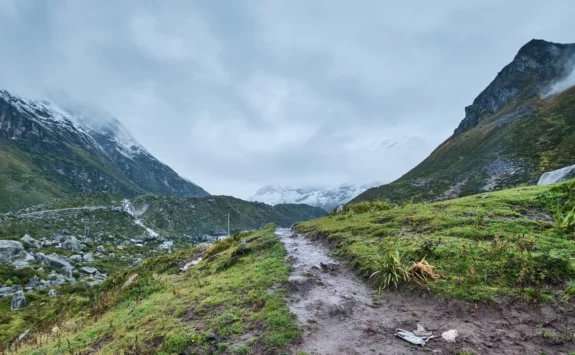Ultimate Guide To Top 7 Best Monsoon Trek In Nepal
It is common practice to advise against the monsoon trek in Nepal. There are a few treks that are preferred during the monsoon season instead of other times. The monsoon season in Nepal lasts from June until the end of August.
Most of Nepal is subject to rainfall and thunderstorms during this period. Despite this, most of the rain falls in the afternoon. However, there are a few rain shadow destinations in Nepal where you will experience less rainfall than in other places.
The monsoon brings life to the plants and makes them lush and green. This makes the landscape clean and the views of the scenery are amazing. The earthy smell of the monsoon rain will take you to a different world.
To help you plan an unforgettable journey, this comprehensive guide presents the top 7 best monsoon treks in Nepal. This trek is carefully selected to provide an exceptional and immersive experience amidst the stunning monsoon landscapes.
Monsoon Quick Facts
| Months | June, July, and August |
| Festivals | Nag Panchami, National Paddy Day, Janai Purnima, Gai Jatra, Teej and Indra Jatra |
| Best Monsoon Treks | Upper Mustang Trek, Upper Dolpo Trek, Nar Phu Valley Trek, and Humla Limi Valley Trek |
| Accommodation | Hotels in cities, Tea houses, or homestays in remote areas |
| Activity Other than Trekking | Paragliding, City Sightseeing Tours, Bungee Jumping, Zip-flyer, Jungle/Wildlife Safari, Village Tours and Hiking |
| Trekking Costs | It depends on the services and group size |
List of Top 7 Best Monsoon Trek In Nepal
Nepal is known for its beautiful scenery and varied landscapes. It is a great time to go trekking during the rainy season. The lush, green valleys come back to life, and the majestic Himalayan peaks stand out against the dramatic clouds. You will also see the wildflowers and thundering rivers, giving you a chance to see the area’s natural beauty.
So, are you wondering what the best monsoon trek in Nepal is that provides you with the best experience? Here are our recommendations.
Nar Phu Valley & Kangla Pass Trek
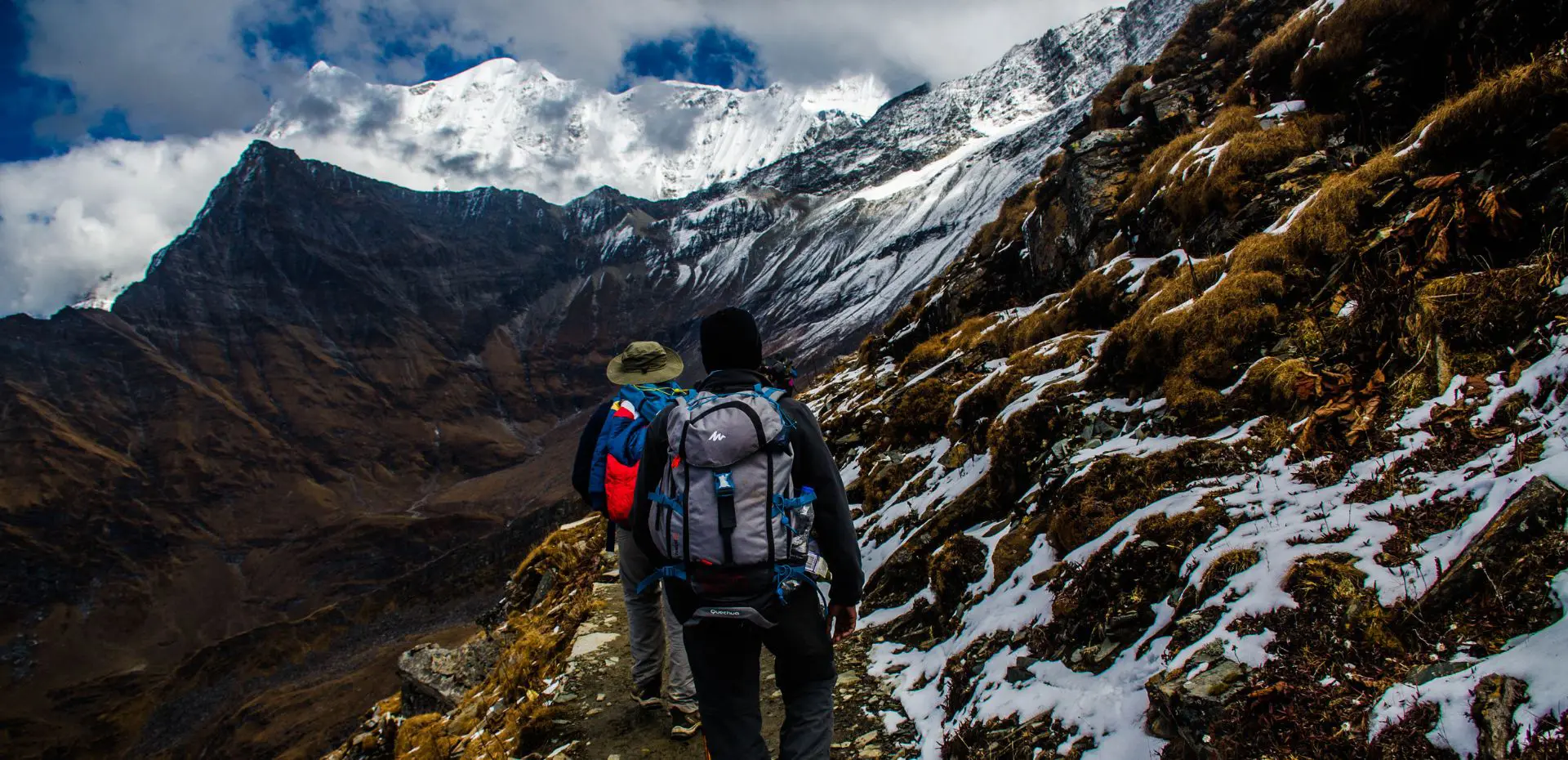
Nar Phu Valley & Kangla Pass Trek is a monsoon gem when it comes to trekking. You will be trekking in the lush greenery and misty beauty. As raindrops dance on emerald leaves and rivers fill with life-giving water, this secret sanctuary opens up its mysteries. This trek takes you through ancient Tibetan villages, cascading waterfalls, and the rough terrain covered in colourful plants.
This trek is hidden in a remote part of the Annapurna area. But the real challenge is getting over the challenging climb to Kangla Pass. You can see a wide view of snow-capped hills from the top. Bring your sense of adventure with you and enjoy the wild beauty of Nar Phu Valley and Kangla Pass. Every step you take there will remind you of the power and beauty of the rainy season in Nepal.
Upper Mustang Trek
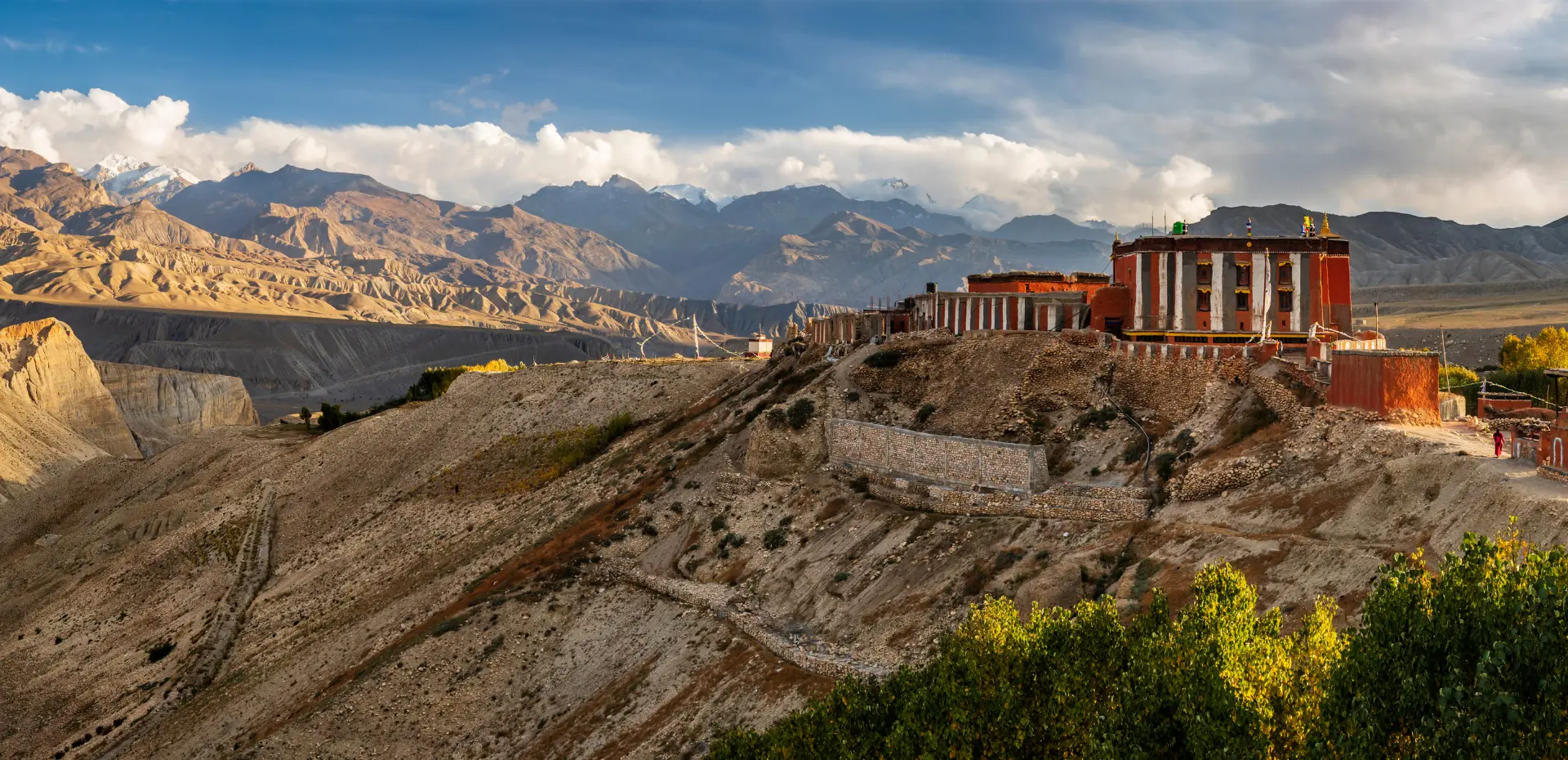
The country’s last restricted state was Upper Mustang. It was cut off from the rest of the country for hundreds of years, giving it its own unique culture and traditions.
The geography of this area is different from other parts of Nepal because it is in the rain shadow of the Himalayas. It is full of historical and religious sites. Located on the Tibetan plateau, its culture is more Tibetan than Nepali.
Trekkers who come to the area can see how different the landscape, nature, and society are from one another. Take advantage of the chance to see the Himalayan desert, caves, and Nepal’s last town that borders China.
Upper Dolpo Trek
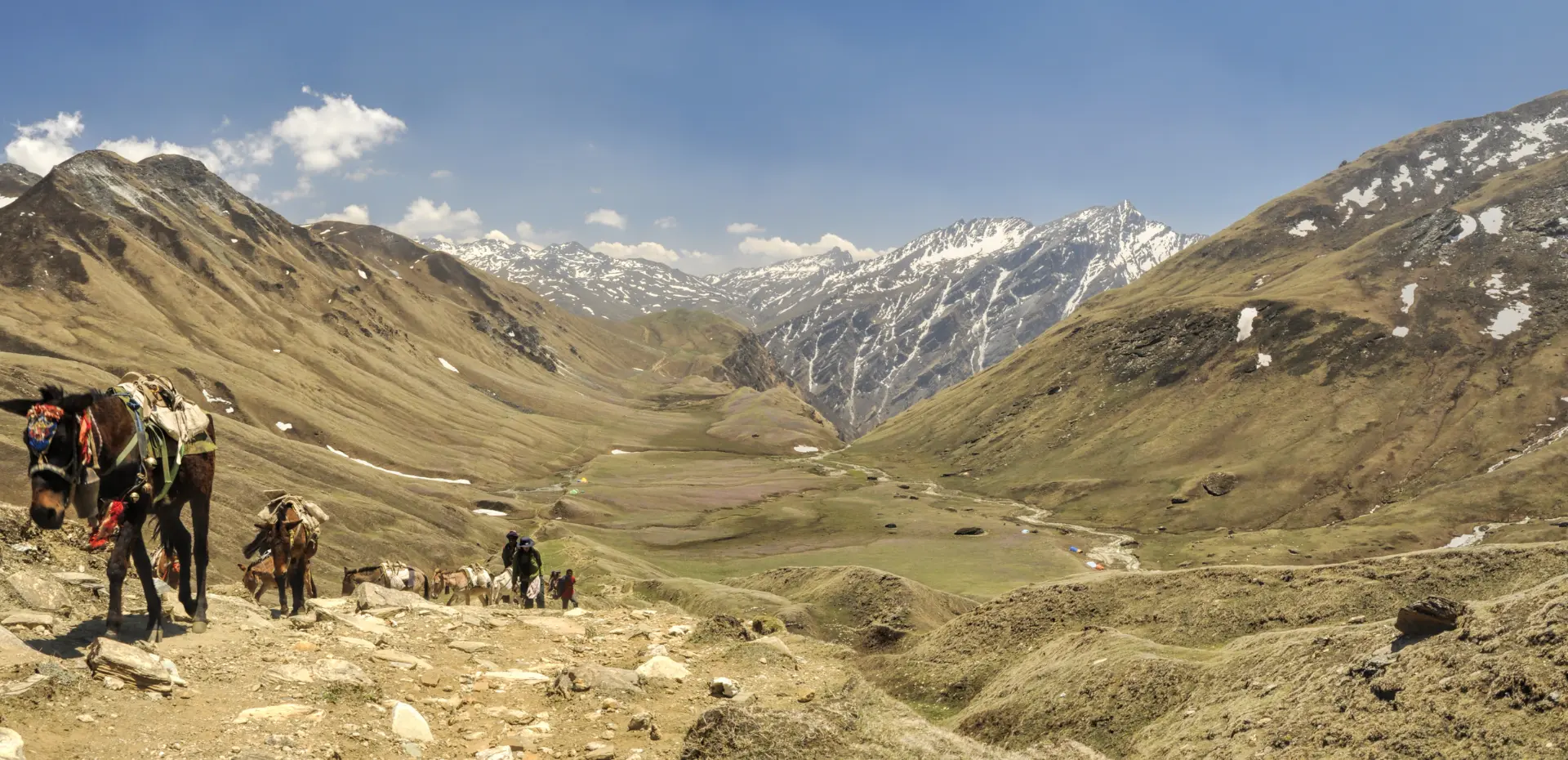
Upper Dolpo Trek lies in western Nepal and is a great place to go trekking because it is in one of the most remote parts of the Himalayas. It’s worth it to see Tibetan Buddhism, some of the country’s oldest temples, the beautiful Lake Phoksundo, rare animals, and a real sense of being in the wild. Upper Dolpo Trek is a restricted place that didn’t become open to tourists until 1989. The Upper Dolpo trek route generally goes above 4,000 meters, and it is part of the Shey Phoksundo National Park.
The western part of Nepal is not very developed and is very poor. Dolpo doesn’t have as much tourist infrastructure as other parts of Nepal. So you will need to bring your food and camp. You are prohibited from trekking in Upper Dolpo by yourself.
Nagarkot Day Hike
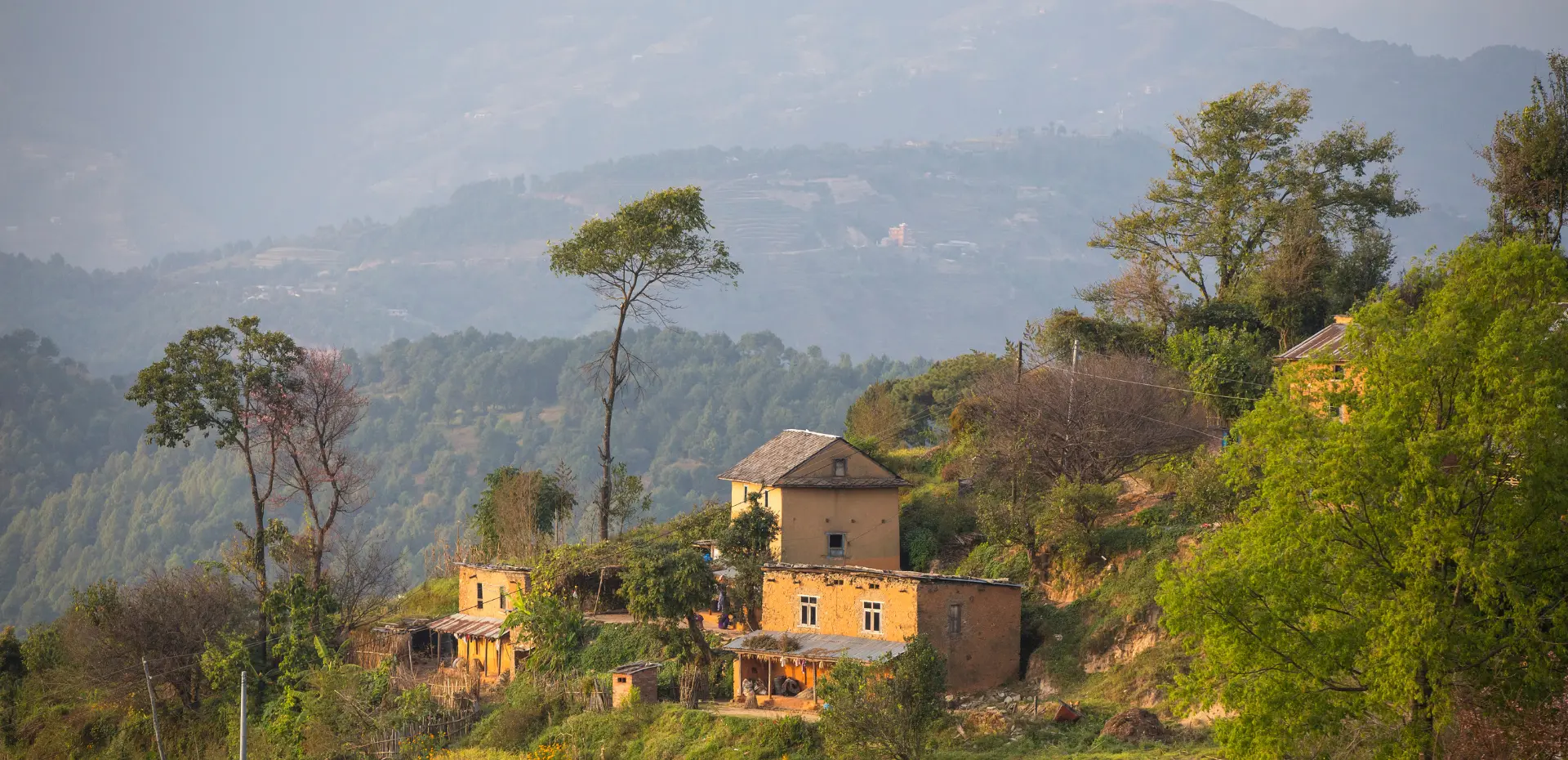
The Nagarkot Day Hike is a great way to experience both excitement and culture. Get ready to see the beautiful sunrise over the Himalayas from Nagarkot. Our carefully planned day-long schedule starts with a beautiful drive from your Kathmandu hotel to the start of the adventure.
The path leads to a great mountain view from which the Himalayas look like they are only a hand’s length away. You can see Dhaulagiri (8,167 meters) in the west, Mount Everest (8848 meters) in the east, and the beautiful Kanchenjunga (8,586 meters) in the north from the viewpoint. One big view lets you see three of the world’s tallest peaks.
Panch Pokhari Trek
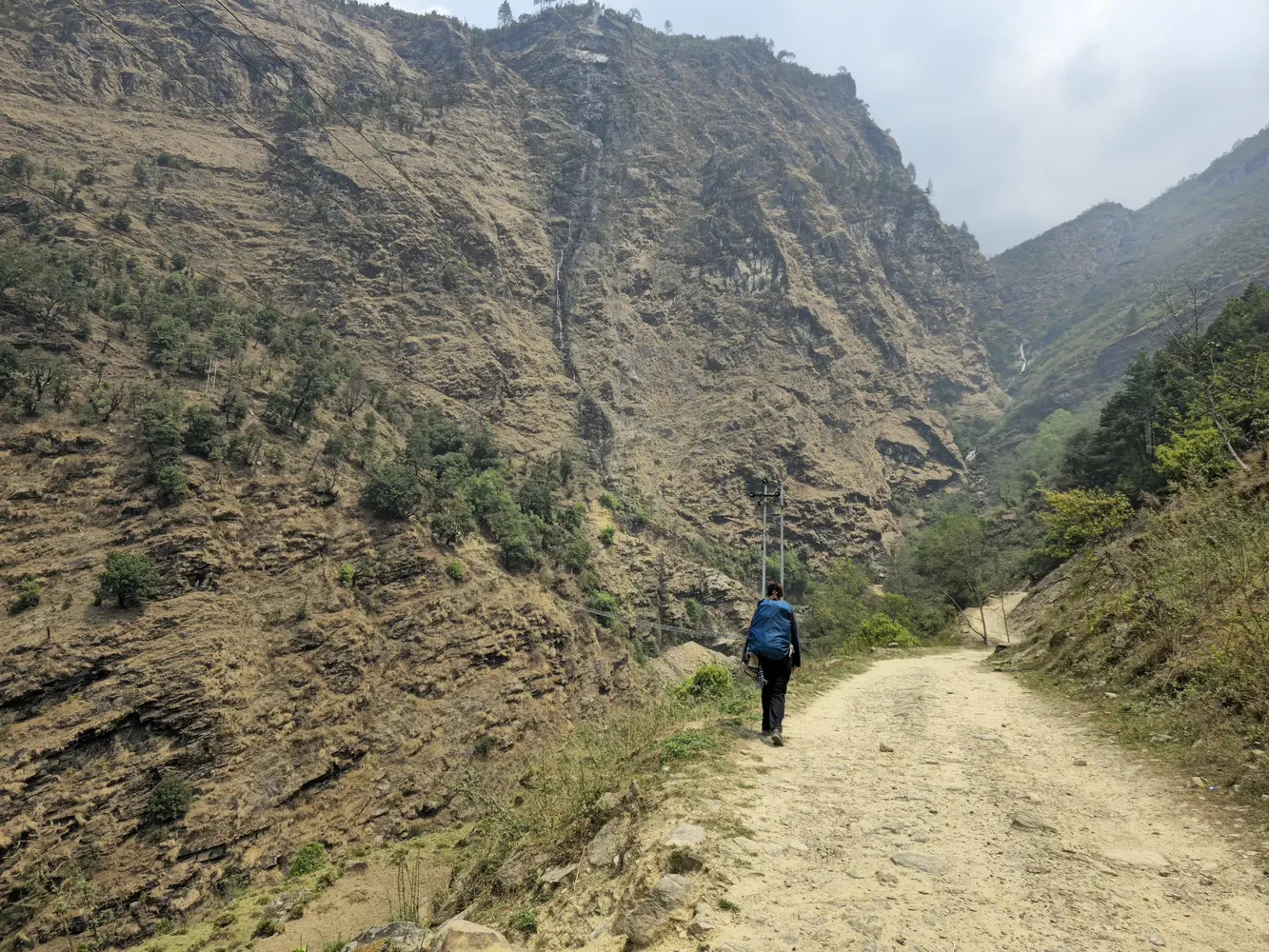
Nepal’s Panch Pokhari trek takes you to five holy lakes at the base of the Jugal Himal. It is a short but exciting journey in the Himalayas. The trail is less crowded and good for people who have never been on a trip before. Great views of the mountains can be seen from the trail, and you can also learn about different cultures. Rhododendron forests, alpine pastures, terraced fields, rivers, streams, and the way of life of the local people are all part of the trek.
The walk gives you stunning views of the Gauri Shanker, Dorje Lakpa, Langtang, Jugal, and Rolwaling ranges in the Himalayas. The viewpoint is about a 30- to 45-minute walk up to 4300 meters and has a wide view of the five lakes and the Jugal Range’s peaks.
Mardi Himal Trek
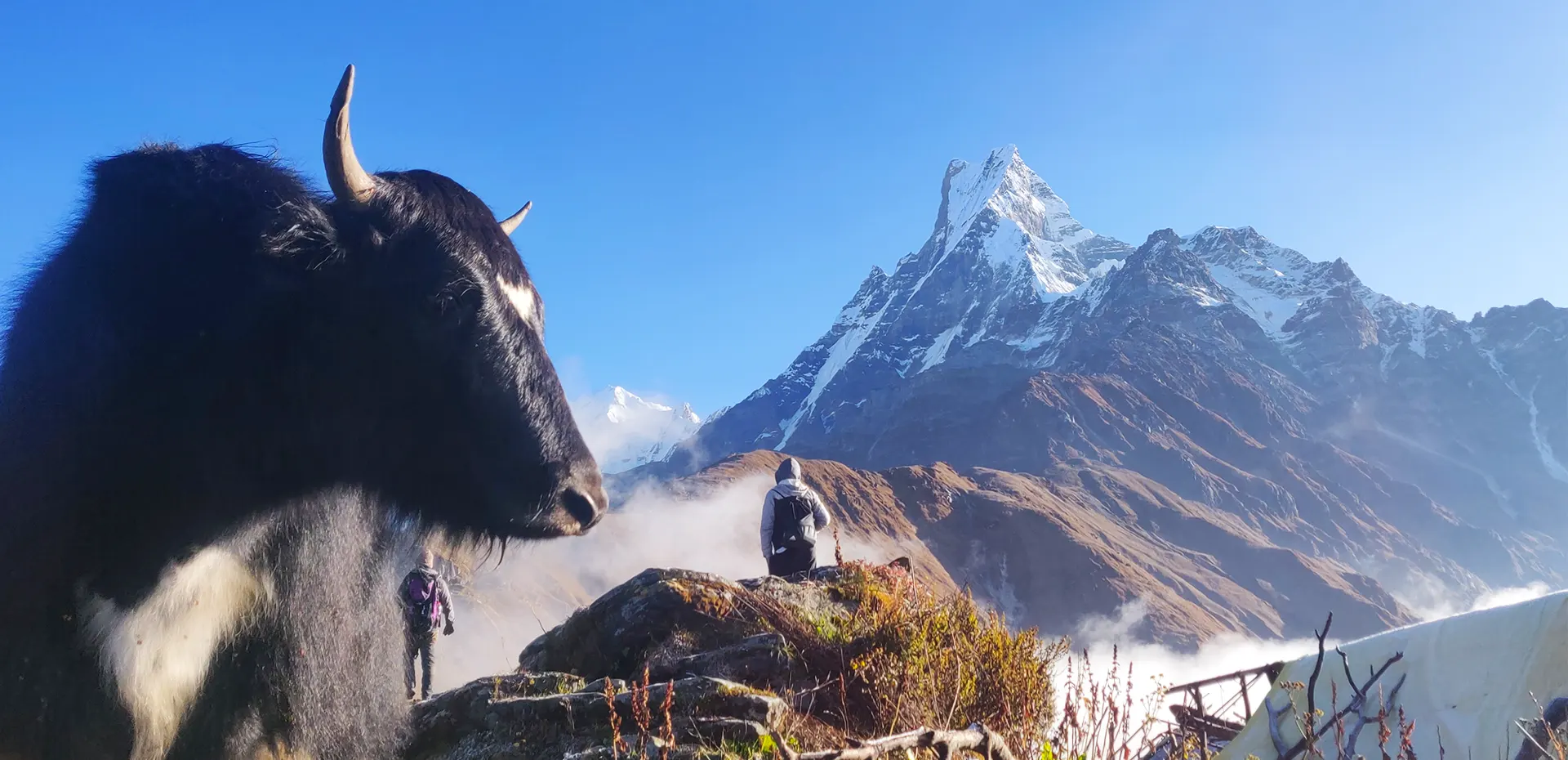
The newest popular hiking spot in Nepal is Mardi Himal Trek. Walk through the green, lush forest after leaving the path at the top of a mountain. Get the magical and unspoiled trekking experience of Nepal’s latest route. This is among the best and most appropriate trips for beginner tourists hoping to see the breathtaking Annapurna Himalayas.
Trekkers with more expertise will appreciate the difficulty of reaching the beautiful Mardi Himal Base Camp. The amateurs will find the well-kept paths and moderate climbs to be the perfect introduction to the sport. Mardi Himal Trek offers breathtaking vistas of Annapurna and Machapuchare. This trek is a must-try for everyone looking for a well-balanced adventure and natural beauty.
Ghorepani Poonhill Trek
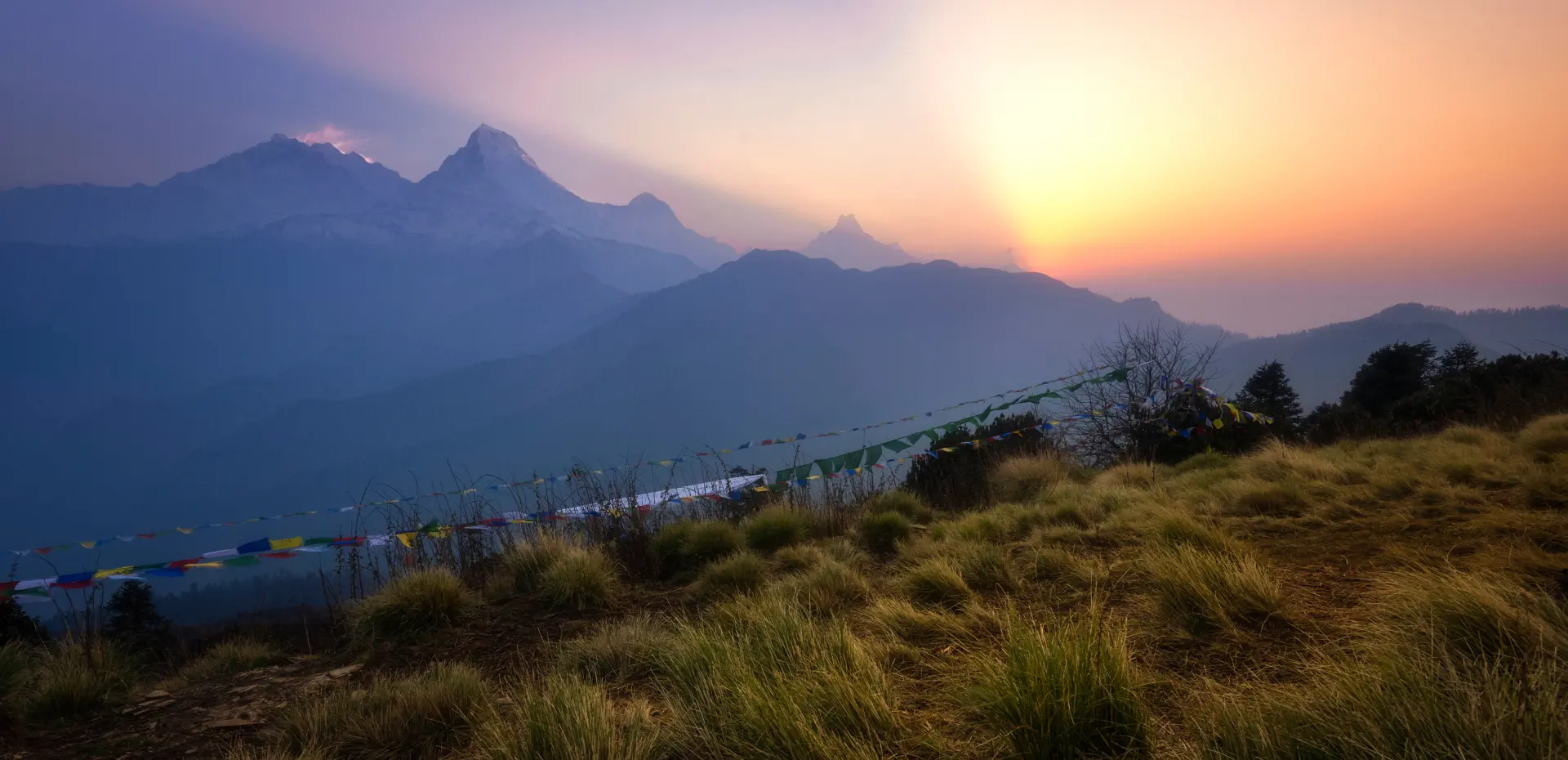
The Ghorepani Poon Hill Trek is possibly the best short trek in the Himalayas! Suitable for all ages, especially families with kids, this trek yet enters the heart of Annapurna. The best place to see the Annapurna range, Dhaulagiri, Nilgiri, Tukuche, and Lamjung Himal is from Poon Hill (3,210m).
One should value the opportunity to take a walk up to Poon Hill and see the sunrise over these breathtaking mountains covered in snow. Enjoy the opportunity to see the sunrise surrounded by breathtaking mountains from the summit of Poon Hill.
Preparations for Monsoon Trek in Nepal
Monsoon season comes as soon as clouds form over Nepal’s magnificent peaks, frequent rainfall, and beautiful wildflowers. This season provides an amazing and charming trekking experience with its lush landscapes, colourful vegetation, and tumbling waterfalls. But starting a hike at this time of year needs careful preparation and evaluation of the difficulties.
Getting ready for a monsoon trek in Nepal is an adventure in itself, from selecting the best routes to packing necessities. Come along as we explore the preparations for the monsoon trek in Nepal.
Physical fitness
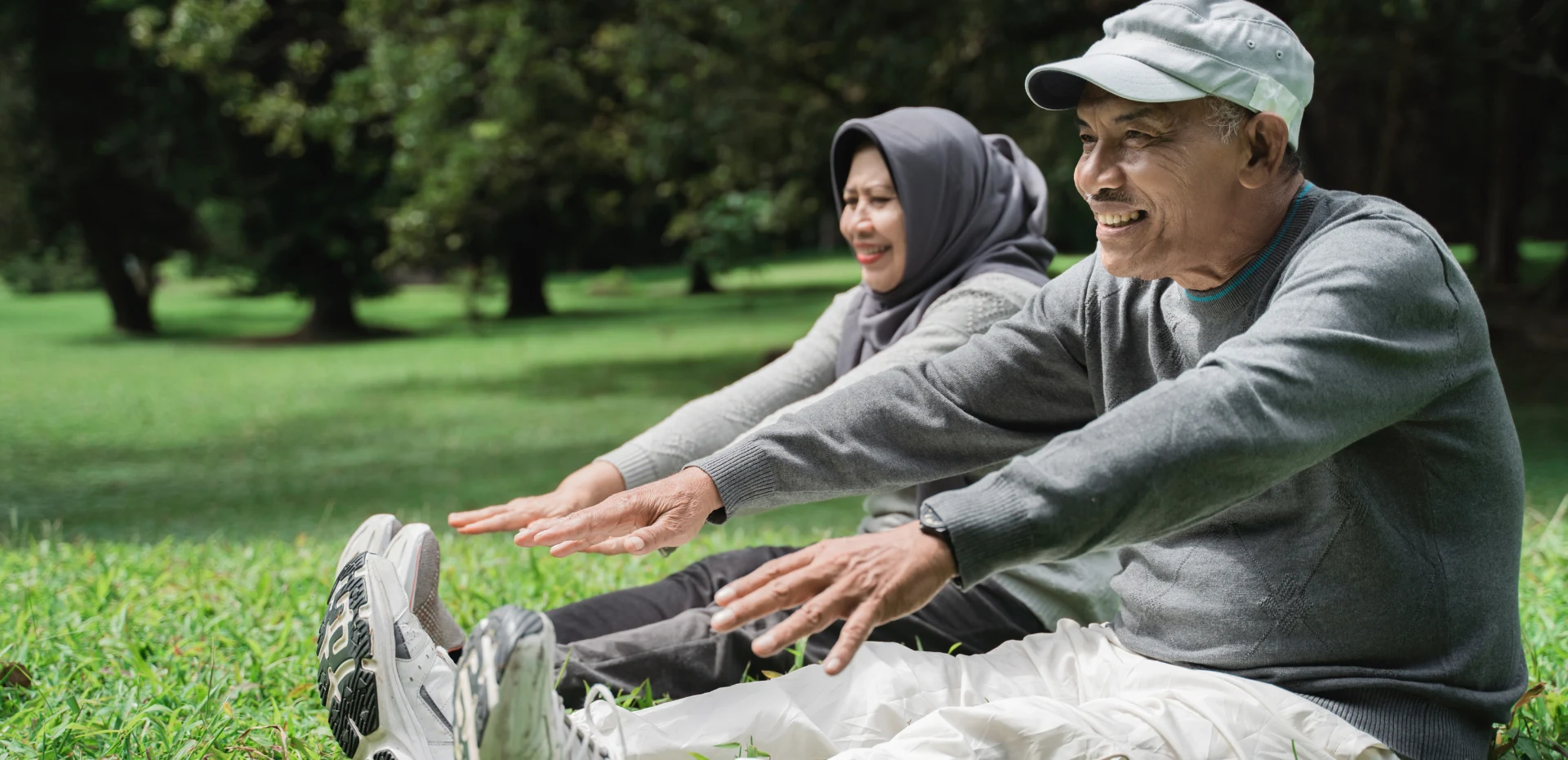
Going on an adventure trek in Nepal requires more than just a desire to explore. You also need to be in great shape. Make sure you have the strength and confidence to take on the beautiful trails and towering hills.
Monsoon trek in Nepal can be difficult because of the high peaks, steep climbs, and long hours of walking. First, check your general stamina, strength, flexibility, and cardiovascular endurance to see what you need to work on.
Cardiovascular exercise is an important part of getting ready for trekking because it determines how long your body can handle being physically active. Do things like running, riding, swimming, or brisk walking to get your heart rate up and your blood flowing more efficiently. Aim for 30 to 60 minutes of mild-to-intense aerobic exercise every day. As your endurance grows, slowly increase the amount of time you work out and the intensity of your workouts.
To avoid muscle strain, reduce discomfort in joints, and improve general agility on the trails, it’s important to keep your flexibility. To make key joints like the hips, hamstrings, calves, and shoulders more flexible, do yoga and other stretching movements regularly. Focus on dynamic stretches to warm up before you work out and static stretches to cool down and lengthen your muscles after you work out. This will help you keep your range of motion at its best while you’re walking.
Gear and equipment
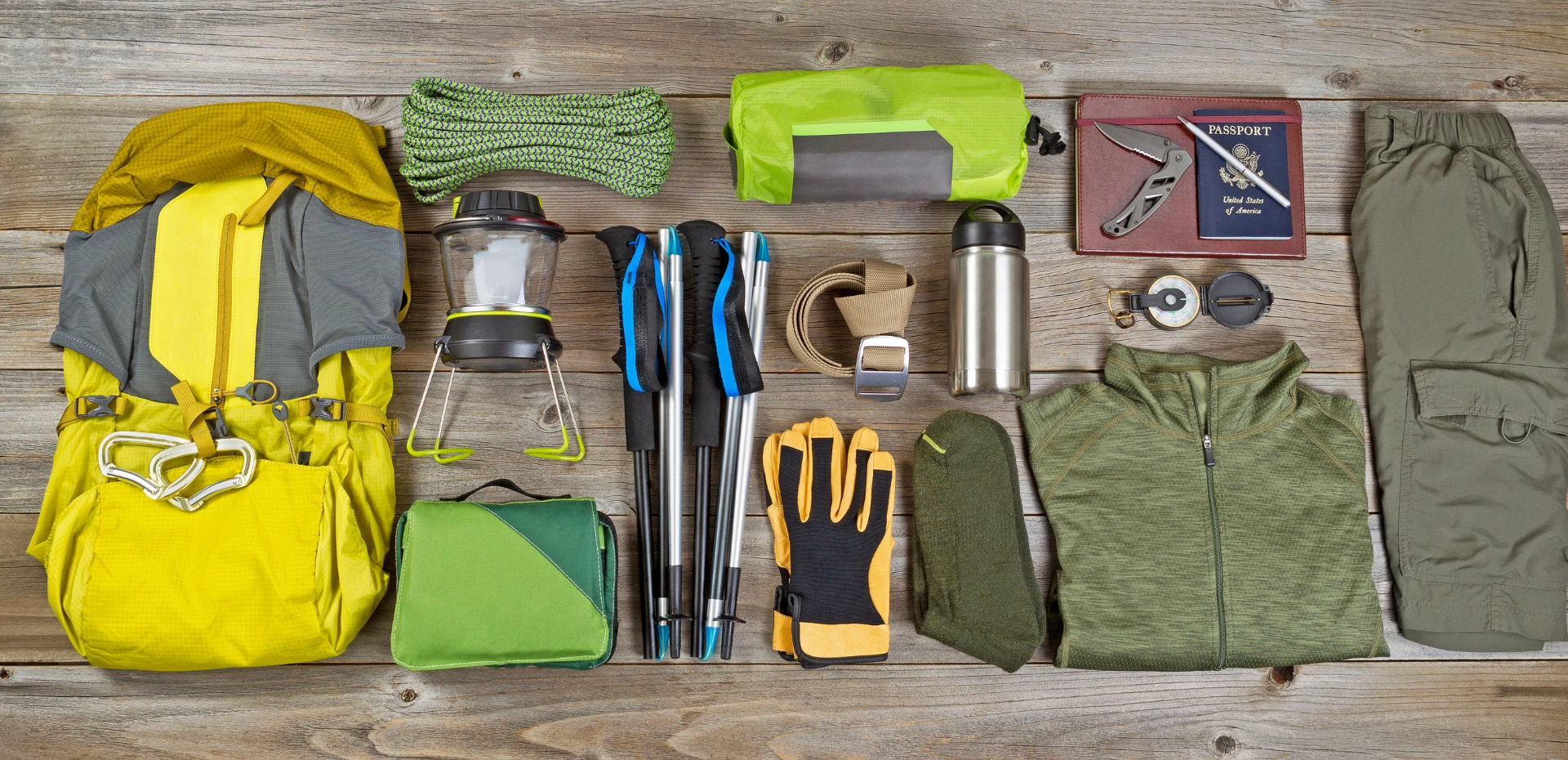
Trekking through the beautiful landscape of Nepal during the monsoon season is an adventure and suspense like no other. You will face unpredictable weather patterns and challenging terrain, so you need careful preparation for the monsoon trek in Nepal. Below, we have listed some important tips to stay safe, comfortable, and fully prepared during the trek.
- Invest in a durable and waterproof backpack to safeguard your gear from the relentless rain showers. Look for a backpack with sealed seams, waterproof zippers, and a rain cover to ensure your belongings stay dry.
- Equip yourself with a high-quality rain jacket and rain pants made from breathable, waterproof materials such as Gore-Tex.
- Select quick-dry cloths designed to wick moisture away from your skin and dry rapidly, allowing you to stay warm and comfortable even in the monsoon season. Opt for moisture-wicking base layers, lightweight hiking pants, and synthetic or merino wool shirts.
- Choose solid and waterproof trekking shoes with excellent grip to navigate the slippery and muddy trails during the monsoon trek in Nepal.
- Adjustable, lightweight trekking poles with good grips and durable tips to provide support and stability on both ascents and descents are best.
Permits and fees
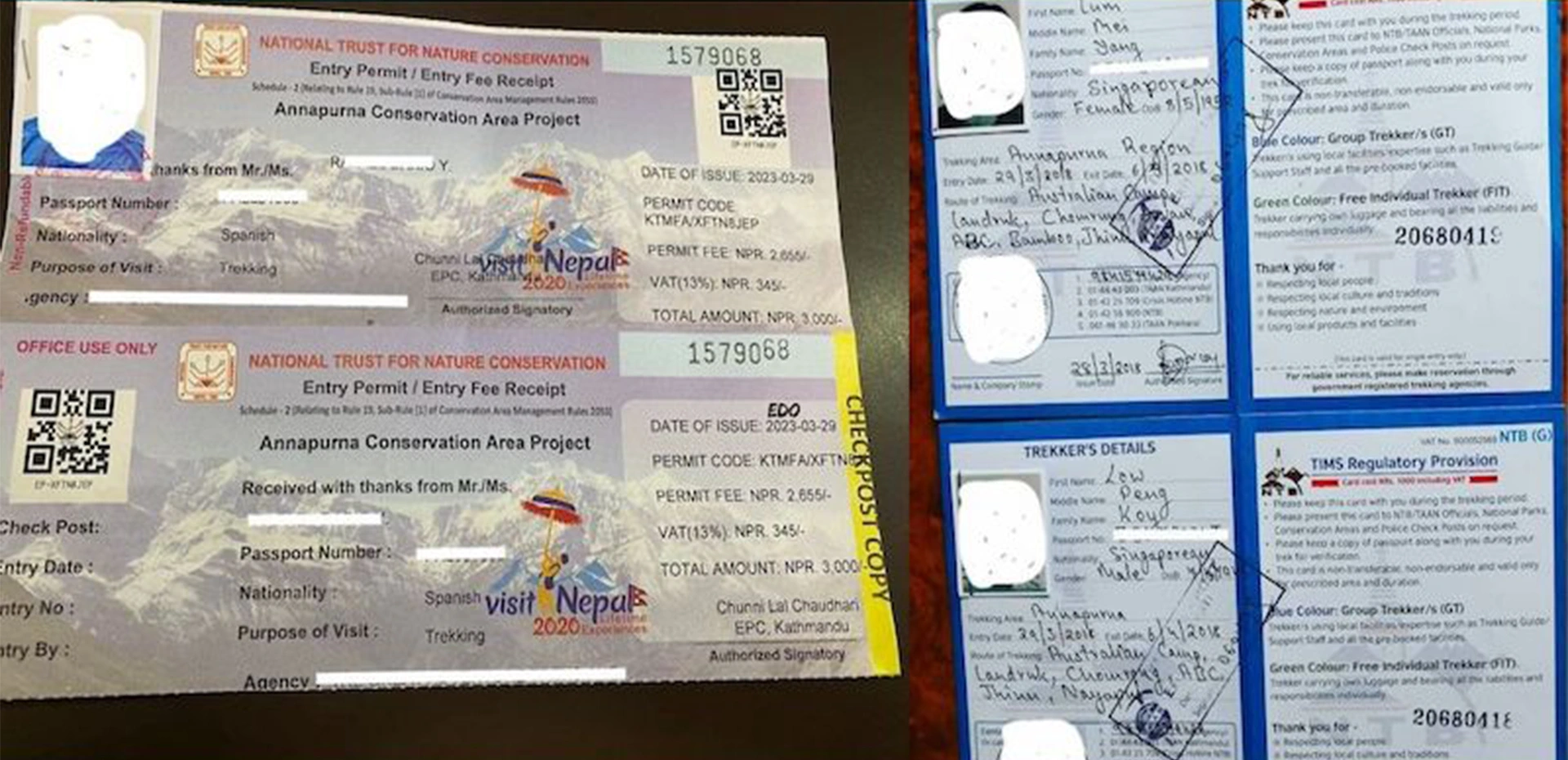
You have to go through the necessary permits and fees required for trekking in Nepal before setting foot on the trails. It is essential to acquire the permits and fees for a monsoon trek in Nepal. This information will ensure a smooth and hassle-free journey amidst the breathtaking beauty of the Himalayas.
The Trekkers’ Information Management System (TIMS) card is a permit for all trekkers exploring trekking routes, including those during the monsoon season. This permit is managed by the Nepal Tourism Board and Trekking Agencies Association of Nepal (TAAN). TIMS card aims to ensure the safety and security of trekkers by collecting essential information and facilitating search and rescue operations if necessary. Trekkers can obtain TIMS cards either through registered trekking agencies or directly from the Nepal Tourism Board in Kathmandu. TIMs Card cost NPR 2000 per person for international trekkers and NPR 1000 for SAARC nations.
Many popular trekking routes in Nepal pass through national parks. You need to pay an entry fee while doing a monsoon trek in Nepal. For example, trekking in the Annapurna or Everest Region should obtain respective entry permits from the respective conservation authorities. These permits contribute to the conservation efforts and sustainable development of the regions. This entry permit also ensures that trekkers hold to park regulations and guidelines. The cost of national park entry permits varies depending on the duration of your trek and the specific conservation area you’ll be traversing. You can visit for the updated price to enter the national park.
Certain trekking routes in Nepal lie under restricted regions. These trails require additional permits or special permissions from the Nepalese government authorities. These restricted area permits are designed to regulate tourism and protect sensitive ecological and cultural sites. Examples of restricted areas include Upper Mustang, Upper Dolpo, and Manaslu Circuit, each with its own permit requirements and associated fees. You need a registered trekking agency to explore restricted areas. Only a government-registered trekking agency can obtain the necessary permits and stick to any restrictions or regulations in place.
Guide or porter
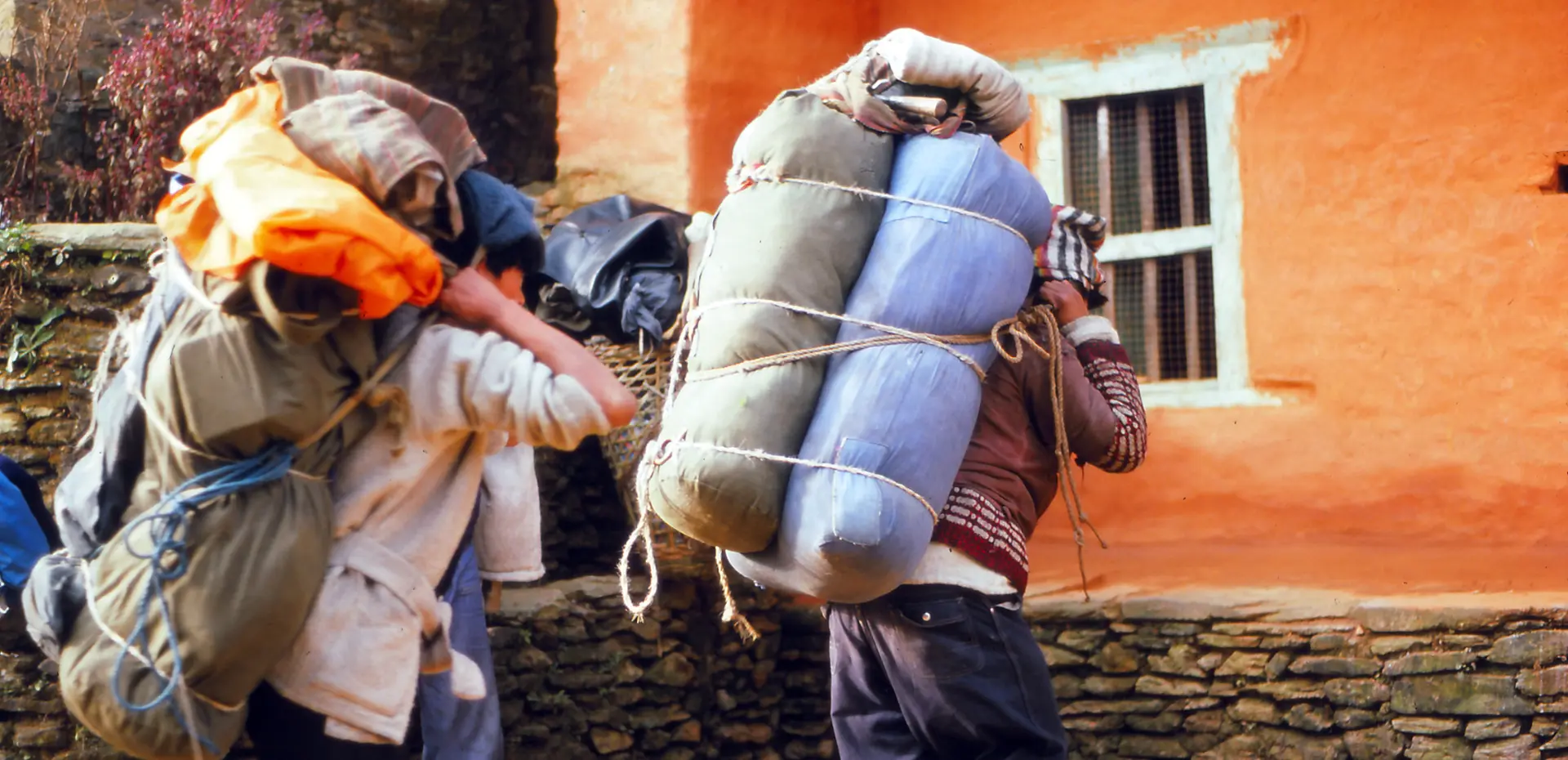
Trekking adventure in Nepal during the monsoon season offers a unique and exhilarating experience. However, traversing the challenging terrain amidst unpredictable weather conditions requires careful planning and support. The roles of guides and porters ensure a safe, enjoyable, and memorable monsoon trek in Nepal.
Their expertise becomes even more critical, as they help assess weather conditions and identify safe routes. They will also help you to mitigate potential risks associated with heavy rainfall, landslides, or swollen rivers. Look for licensed guides who are familiar with the monsoon trekking season and have a thorough understanding of first aid.
Food
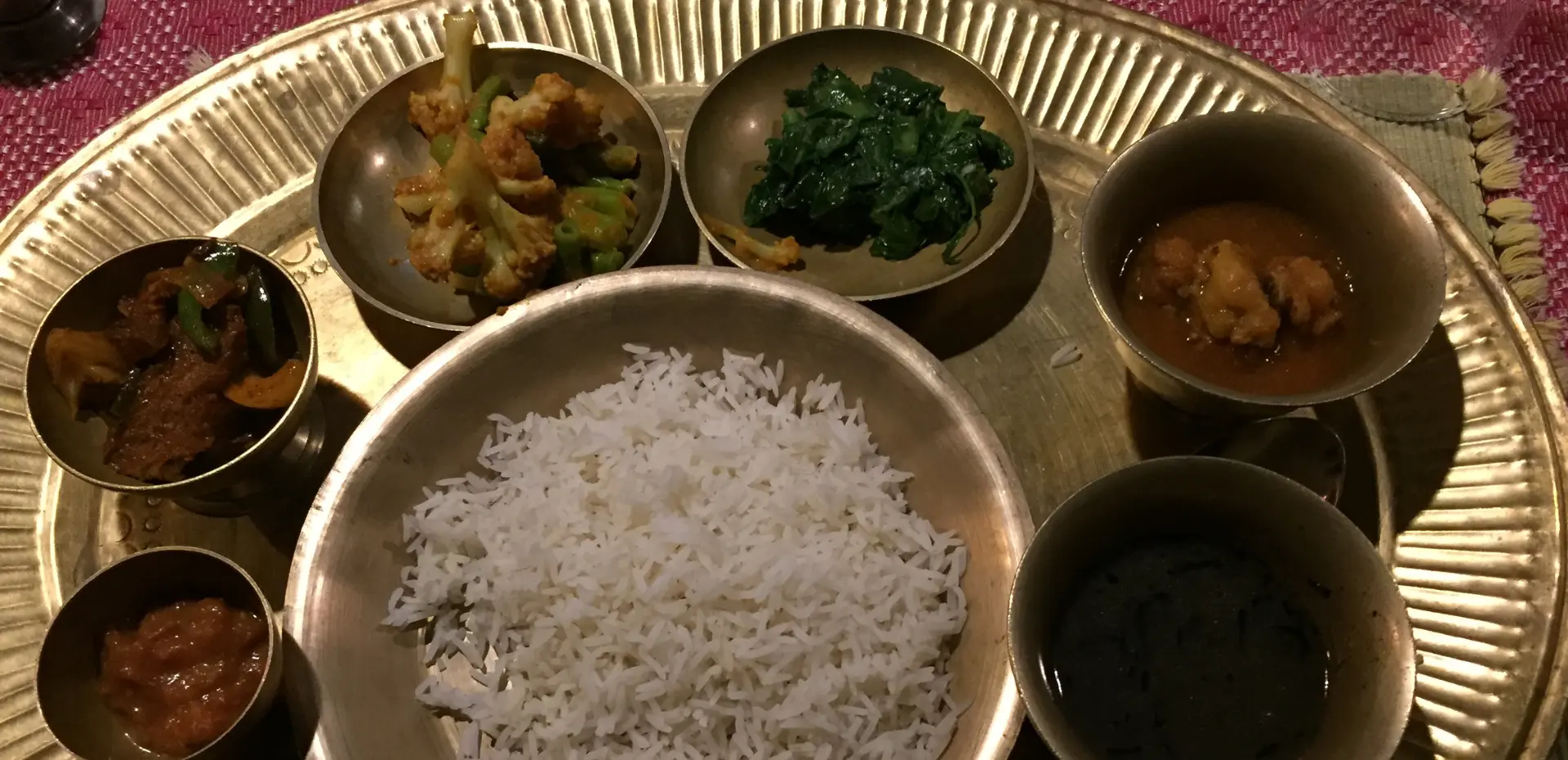
Ensuring adequate food is essential for a safe and enjoyable journey. Pack a supply of nutrient-dense foods that are lightweight, non-perishable, and easy to prepare. This helps you to sustain your energy levels and nourish your body during the monsoon trek in Nepal. Consider foods such as dried fruits, nuts, energy bars, granola, and dehydrated meals. This food provides essential nutrients, calories, and hydration without weighing down your backpack.
The food in the teahouse is basic yet delicious, which are made by the local people. The wide range of food you will find in the teahouses includes rice, lentils, vegetables, and pickles. You will also get unlimited refills of this food. So, that you will be full and gain energy to trek in rough terrain.
Accommodations
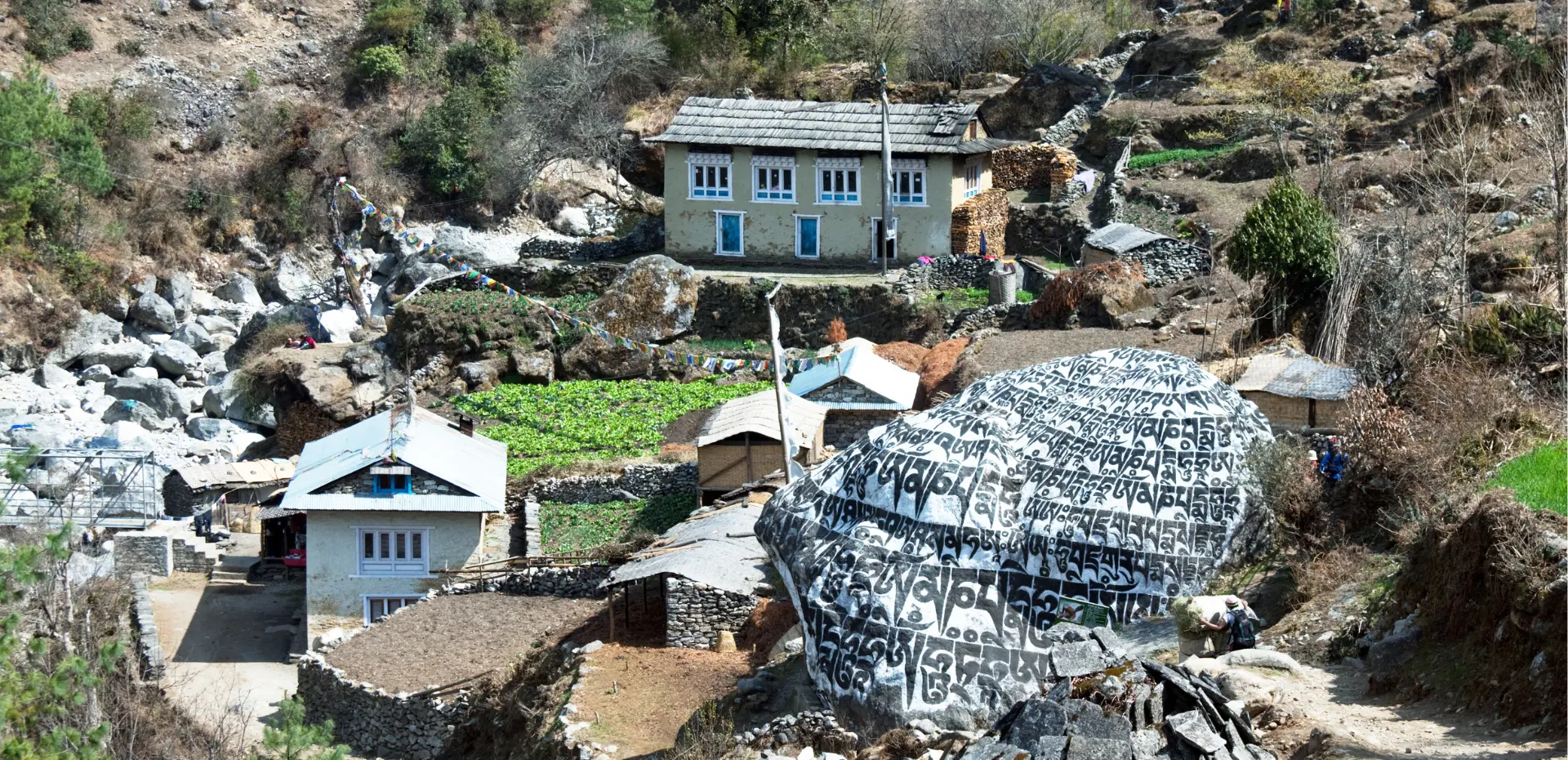
Good accommodation with nice hospitality becomes key for a safe and enjoyable journey amidst the beauty of the rain-soaked trails. Selecting suitable accommodations is key to a comfortable and restful experience during a monsoon trek in Nepal. You will find a range of lodging options, including teahouses, guesthouses, and camping sites, each offering different amenities and levels of comfort. Choose the rooms that provide shelter from the rain, such as rooms with solid roofs, waterproof flooring, and clean bedding. Consider booking accommodations in advance, especially during peak trekking season, to secure your preferred lodging options and avoid potential shortages during rainy weather.
Tips for Safe and Enjoyable Trekking in Monsoon Season in Nepal
Monsoon trekking in Nepal presents its own set of challenges and thrills. The lush greenery, cascading waterfalls, a picturesque landscape, but the unpredictable weather and slippery trails. So, you need to plan and be prepared carefully before the trek.
Below, we will try to unravel the secrets to navigating the trails safely and ensuring an unforgettable experience amidst the monsoon trek in Nepal. We will equip you with knowledge and expertise in essential gear and other important tips. So, grab your backpack, lace up your boots, and jump into the beauty of monsoon trekking in Nepal.
- Begin your trekking days early in the morning to make the most of the relatively dry weather before the afternoon showers. This allows you to cover more ground while minimizing exposure to heavy rainfall and potential risks like landslides.
- Maintain good hygiene practices by regularly washing your hands with soap and water, especially before meals. Carry hand sanitizer for times when washing facilities are unavailable. Stay hydrated by drinking plenty of purified water and avoid consuming untreated water from streams or rivers.
- Leeches are common in moist environments during the monsoon season. Wear leech socks or apply insect repellent containing DEET to exposed skin areas. If you do encounter a leech, remain calm and use salt or a flame to remove it safely.
- Respect local customs and traditions by dressing modestly and asking for permission before taking photographs, especially of people or religious sites. Familiarise yourself with basic Nepali phrases and greetings to interact with locals in a respectful manner.
- Factor in additional days into your trekking itinerary to account for unexpected delays caused by weather conditions, trail closures, or fatigue. This flexibility allows you to adapt to changing circumstances without feeling rushed or pressured to complete the trek within a tight timeframe.
- Boil, filter, or treat water with purification tablets before drinking to reduce the risk of water-borne illnesses such as cholera or giardia. Pack water purification supplies and portable water bottles to ensure access to safe drinking water throughout your trek.
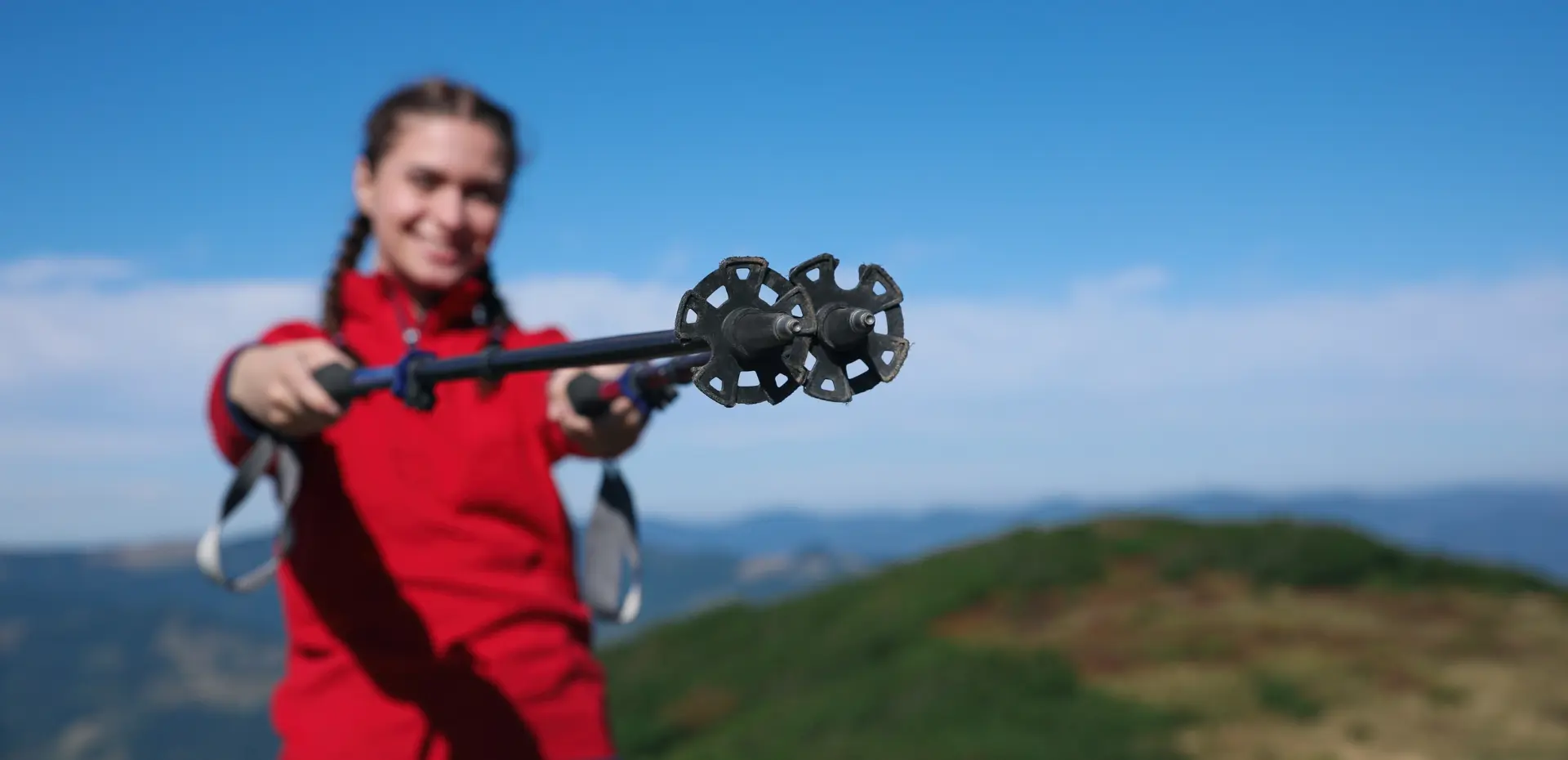
Frequently Asked Questions (FAQs)
When is the monsoon season in Nepal?
The monsoon season in Nepal typically occurs from June to August. During this time, the country experiences heavy rainfall, particularly in the southern and eastern regions. The monsoon brings lush greenery to the landscape, making it a beautiful but challenging time for trekking.
What are the physical fitness requirements for a monsoon trek in Nepal?
A monsoon trek in Nepal requires a reasonable level of physical fitness to navigate the challenging terrain and weather conditions. The specific fitness requirements can vary depending on the difficulty of the trek and individual capabilities.
What gear and equipment do I need for a monsoon trek in Nepal?
A durable and waterproof backpack with sufficient capacity to carry your gear, clothing, food, and water. Consider using a rain cover or lining to protect your belongings from moisture. Invest in waterproof and breathable outer layers, including a rain jacket, rain pants, and gaiters, to keep you dry during heavy rainfall. Organize and protect your gear, clothing, and electronics from moisture by using dry bags and ziplock bags.
Can I trek alone in the monsoon season, or do I need a guide?
Trekking alone in Nepal during the monsoon season can be risky and challenging. You may experience unpredictable weather conditions, slippery trails, and potential hazards such as landslides and flash floods. It is generally recommended to hire a licensed guide or join a trekking group for added safety, and support during the monsoon season.
What are the safety precautions to take during a monsoon trek in Nepal?
Monitor weather forecasts and trail conditions before and during your trek. Stick to established trekking trails and avoid venturing off the beaten path. Trek with a companion or in a group whenever possible. Drink plenty of purified water and stay hydrated throughout your trek, even in rainy weather. Listen to your body and avoid overexertion, especially in challenging terrain or adverse weather conditions.
What are some cultural norms and customs to be aware of during a monsoon trek in Nepal?
It is important to be mindful of cultural norms and customs to show respect for the local communities and enhance your cultural experience. When meeting locals or fellow trekkers on the trail or in villages, greet them with a friendly “Namaste” with hands pressed together in a prayer-like gesture.
Dress modestly and respectfully, especially when visiting religious sites, temples, or villages. Show reverence and respect when visiting religious sites, monasteries, and sacred places along the trekking route. Public displays of affection, such as hugging or kissing, are generally considered inappropriate in Nepali culture.
Conclusion
As we near the end of our Ultimate Guide to the Best Monsoon Treks in Nepal blog, it might be clear that the fascination of Nepal’s monsoon-soaked trails is captivating. Each trip provides a unique quality of experience waiting to be discovered.
As the monsoon clouds paint the sky with spectacular hues and the rain-soaked ground breathes new life. You will be immersed in a symphony of sights, sounds, and feelings that stir the soul and stimulate the spirit of exploration. However, among the breathtaking beauty of Nepal’s monsoon season, attention must be exercised. You must respect nature and embrace the wisdom of local customs and traditions.
© Copyright 2024 Eco-friendly Treks. Website Developed by: AVIVA


